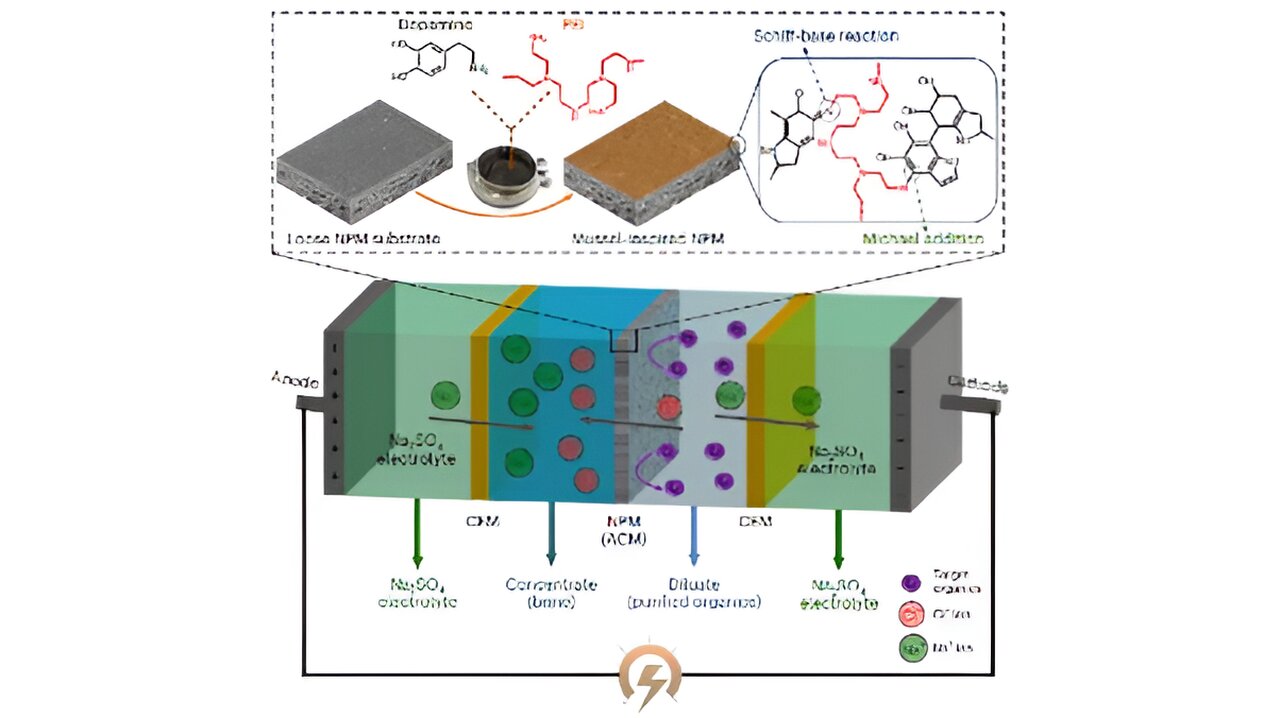A revolutionary membrane inspired by mussels has been created by engineers. This membrane is capable of effectively separating chemicals in wastewater and allowing for their reuse. This development presents a unique opportunity for industries to enhance their sustainability efforts while also extracting valuable by-products and chemicals from wastewater.
This new membrane, known as a thin-film composite nanoporous membrane or TFC NPM, has been specifically designed for wastewater treatment. It exhibits an “unprecedented” ability to separate salts and other chemical components from water, providing a more sustainable approach to water treatment and management across various industries such as pharmaceuticals, oil and gas, textiles, and food processing. The membrane’s exceptional performance is detailed in a research paper published in Nature Water by academics from the University of Bath in the UK, along with researchers from China, South Korea, Singapore, Australia, and Belgium.
This breakthrough membrane has the potential to replace the current membranes used in electrodialysis, a process that utilizes electrical current to transport ions through membranes from one solution to another to treat water. Existing membranes are expensive and can achieve separation efficiencies of 90%–95%. In comparison, the new TFC NPM can achieve efficiencies of over 99%, while using less energy and at a lower cost.
Dr. Ming Xie, a lecturer in Chemical Engineering at the University of Bath and one of the paper’s authors, highlights the transformative impact this membrane could have on wastewater treatment. He states, “Traditionally, many industries have considered wastewater as a necessary cost of business. Technologies like the membrane we have developed can help us reduce carbon emissions by lowering the energy requirement for wastewater treatment. Additionally, they enable efficient separation of its components, including chemicals, salts, energy, biomass, and nutrients, which can then be reused as high-value by-products.”
The inspiration for the coating on the membrane’s surface came from mussels, specifically the polymer polyethyleneimine (PEI) and polydopamine (PDA) compound secreted by mussels to adhere to surfaces in wet conditions. This sticky coating makes the membrane highly selective, allowing water to pass through while blocking other compounds and organic materials. This results in improved water filtration and a highly efficient, low-energy approach to individually separating chemicals.
The researchers conducted tests using four different antibiotics and saltwater solutions to demonstrate the membrane’s electro-driven filtration performance. The membrane exhibited unprecedentedly high recovery efficiency in removing antibiotics from the saltwater, achieving over 99.3% desalination efficiency and more than 99.1% recovery of the antibiotics.
If implemented in industrial wastewater treatment, this membrane has the potential to significantly improve the electrodialytic fractionation of various organic/NaCl mixed solutions, surpassing the effectiveness of current processes.
The co-authors of the research, Dr. Dong Han Seo from the Korea Institute of Energy Technology and Dr. Jiuyang Lin from the Chinese Academy of Sciences, emphasize the membrane’s long-term stability, low energy consumption, and its ability to address the challenges faced by the pharmaceutical industry in bio-based wastewater treatment and water reuse.
The authors are currently exploring avenues to commercialize the membrane.
More information:
Jiuyang Lin et al, Shielding effect enables fast ion transfer through nanoporous membrane for highly energy-efficient electrodialysis, Nature Water (2023). DOI: 10.1038/s44221-023-00113-5. www.nature.com/articles/s44221-023-00113-5
Citation:
Mussel-inspired membrane can boost sustainability and add value to industrial wastewater treatment (2023, August 3)
retrieved 3 August 2023
from https://phys.org/news/2023-08-mussel-inspired-membrane-boost-sustainability-industrial.html
This document is subject to copyright. Apart from any fair dealing for the purpose of private study or research, no
part may be reproduced without the written permission. The content is provided for information purposes only.
Denial of responsibility! TechCodex is an automatic aggregator of the all world’s media. In each content, the hyperlink to the primary source is specified. All trademarks belong to their rightful owners, and all materials to their authors. For any complaint, please reach us at – [email protected]. We will take necessary action within 24 hours.

Jessica Irvine is a tech enthusiast specializing in gadgets. From smart home devices to cutting-edge electronics, Jessica explores the world of consumer tech, offering readers comprehensive reviews, hands-on experiences, and expert insights into the coolest and most innovative gadgets on the market.


